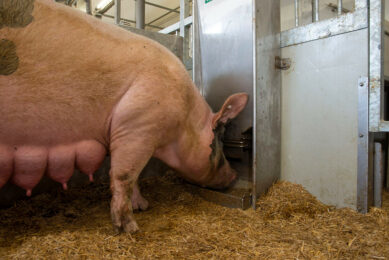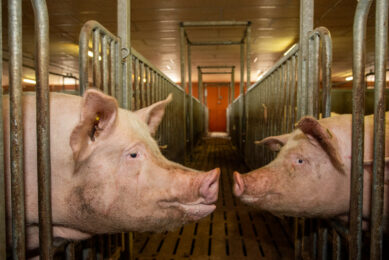Prevalence of lameness in farrowing and weaned gilts and sows in Ontario commercial hog operations
Lameness is a welfare and economic concern in hog production. Lame sows and gilts require treatment or removal from the herd. Early culling of sows is an economic cost for a hog producer. Lame sows are 1.7 times more likely than non-lame sows to be removed from a herd within 350 days of initial lameness assessment (Anil 2009).
In 2007, American commercial herds participating in the PigCHAMP datashare program reported locomotor disorders including lameness and down sows as the reason for 14.5% of removals (Engblom 2009). Lame sows may also have poor reproductive performance including reduced number of pigs born alive compared to non-lame sows (Anil 2009).
If lameness persists in a herd, it becomes a serious welfare issue and correcting it may require expensive modifications of housing areas. The prevalence and severity of lameness in gilts and sows has not been well documented. In the United Kingdom, the prevalence of abnormal gait in pregnant gilts and sows is 14.4% and 16.9% respectively but corresponding data for Ontario has not been collected (Kilbride 2009).
To address this, the Ontario Ministry of Agriculture, Food and Rural Affairs has undertaken a surveillance project to determine the prevalence and severity of sow lameness on Ontario hog farms.
Paisley Canning1, 2 Tim Blackwell2
1. Animal Health Laboratory, University of Guelph, Guelph, ON, Canada; 2. Veterinary Science and Policy, Ontario Ministry of Agriculture, Food and Rural Affairs, Elora, ON, Canada
For full presentation see attached pdf











